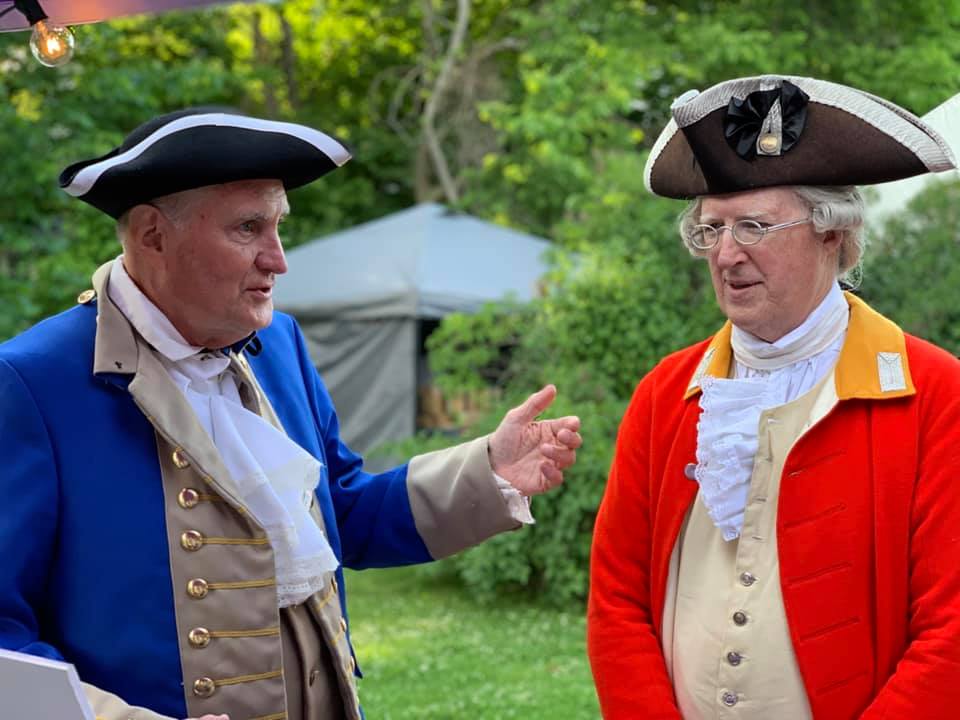
Lincoln Clark as “Colonel Archibald Campbell” During the Reading 375 Celebration
I serve as a volunteer tour guide at the Massachusetts State House. Each year, thousands of guests and school groups (including many from the Barrows School) tour this beautiful building. Throughout the halls are displayed the portraits of former governors – from British royal governors to the present. There are two governors’ portraits that are depicted in military uniforms in the State House. Many are familiar with one, Thomas Gage, last royal governor of Massachusetts, who dispatched the troops to Lexington and Concord on April 19. The other, Dr. John Brooks, receives lesser attention. John Brooks was a hero who served his town, state and fledging national government during times of crisis.
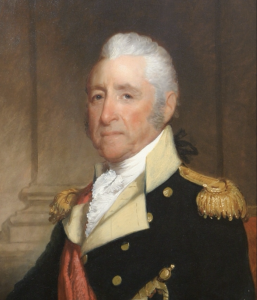
John Brooks was born in Medford in 1752 to a well-to-do farming family. As a boy, he showed much academic promise and was instructed in the sciences and the Greek and Latin languages. He caught the eye of the family physician, Dr. Simon Tufts, who took John at the age of fourteen to serve a seven-year apprenticeship. While in Medford, the military caught his attention. He spent his spare time studying military tactics. Appointed “captain,” he gathered local boys and practiced drills on Dr. Tufts’ property. He would often steal away to Boston to watch and study British military maneuvers.
At the age of 21, Dr. Tufts informed Brooks that the nearby town of Reading was in great need of a physician, so he heeded the opportunity. Dr. Tufts reported: “Here is a young man who is well qualified for the trust.” During his stay in Reading, the winds of conflict with England were in the air. Brooks was asked to take command of the local assembly of minutemen. On the late evening of April 18, 1775, a rider from Medford, Dr. Martin Herrick, rode into the Reading area and raised the alarm. Paul Revere had reportedly told him of the British march to Concord. Brooks immediately assembled his squad and then rode to the Second Parish (North Reading) and spread the alarm: “Stand to your arms! Stand to your arms!” The local communities were prepared for such an alarm. The provincial military leadership had created a plan and effective enough alarm and messenger system so that local commanders such as Brooks knew precisely where and how to respond. At about noon, the Reading minuteman arrived at the Meriam farm in Concord and spotted the British. Brooks ordered his group to take cover throughout the farm. Volleys were exchanged. This was the first group to engage the British on their retreat. Reading minuteman Edmund Foster reported: “When I got there, a great many lay dead, and the road was bloody.” Years later, Brooks related to Foster: “Never have I been more afraid than on that day.” Captain Brooks and the Reading unit reported to the call to Bunker Hill. Although Brooks assisted in building the fortifications, he was dispatched early June 17 by Colonel Prescott to Cambridge to procure additional supplies and did not see action on the hill.
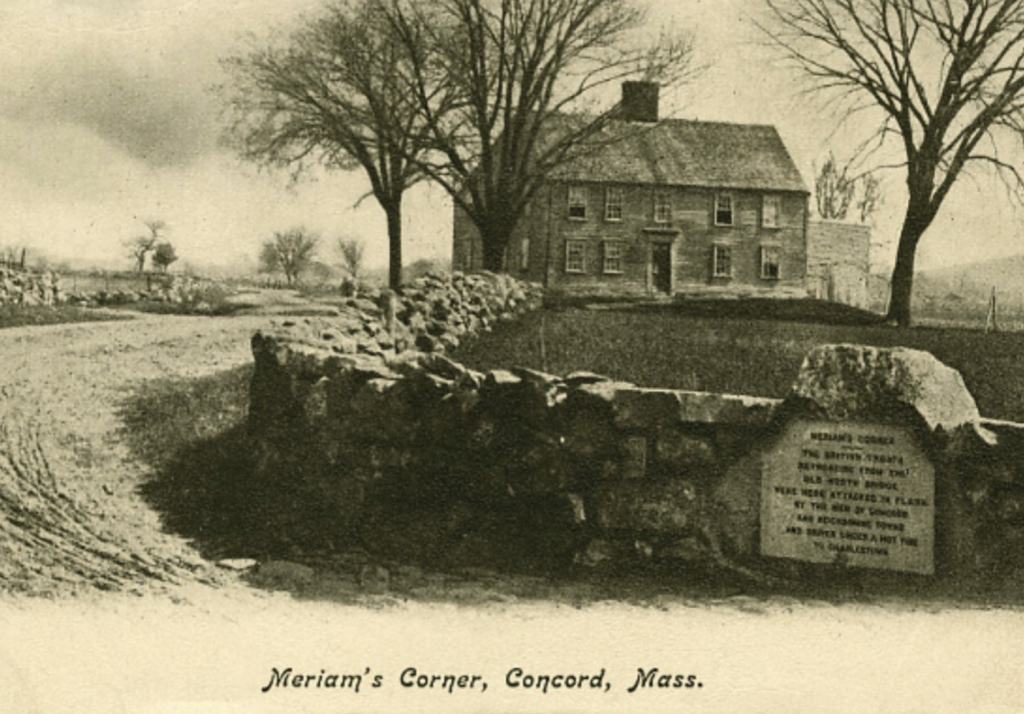
John Brooks continued his successful military career during the early years of the Revolution. In October of 1776, his regiment was called to New York to assist Washington at White Plains. Washington was so impressed in what he heard concerning Brook’s technical brilliance in the successful evacuation of colonial forces that Brooks was promoted to lieutenant colonel.
The importance of the American victory at Saratoga cannot be over-emphasized. Colonel Brooks led the taking of the Hessian emplacements. At the decisive moment, Brooks was reported to have said: “Follow your colonel at double-quick.”
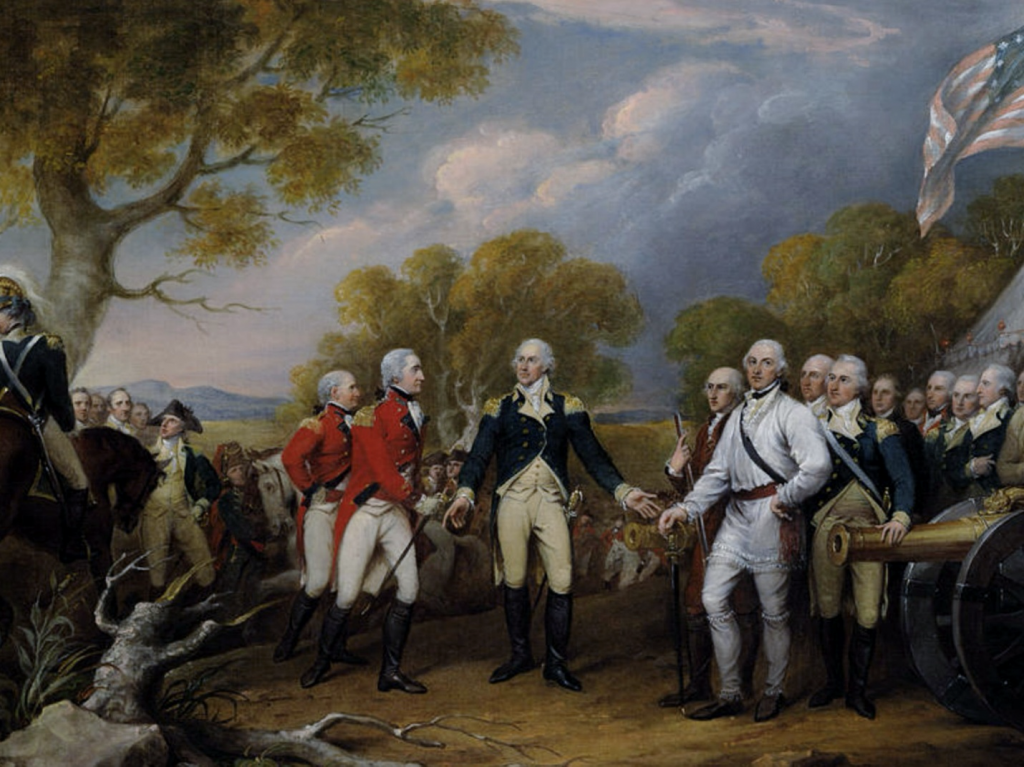
John Trumbull 1821
Rotunda, United States Capitol
Colonel John Brooks is pictured at the right with his arm on the cannon
Washington realized the training of colonial troops was crucial. He convinced Congress to establish an inspector general to form “a system of regulations for maneuvers and discipline.” The inspector general selected was Baron Von Steuben, assisted by the Marquis de Lafayette. Washington invited Brooks to join the team at Valley Forge. In his invitation to Brooks, Washington wrote: “I would make choice of gentlemen who unite and in my own mind have fixed you as one.” Brooks was appalled at the conditions at Valley Forge and scolded the nation for its disregard. “Is there not some chosen curse reserved for those who are cause for so much misery?… Nothing but virtue and love of country has kept the army together.” Brooks was involved in series of military engagements in the New Jersey area and was then made the lieutenant commander of the 7th Massachusetts. He remained as such until the end of his service.
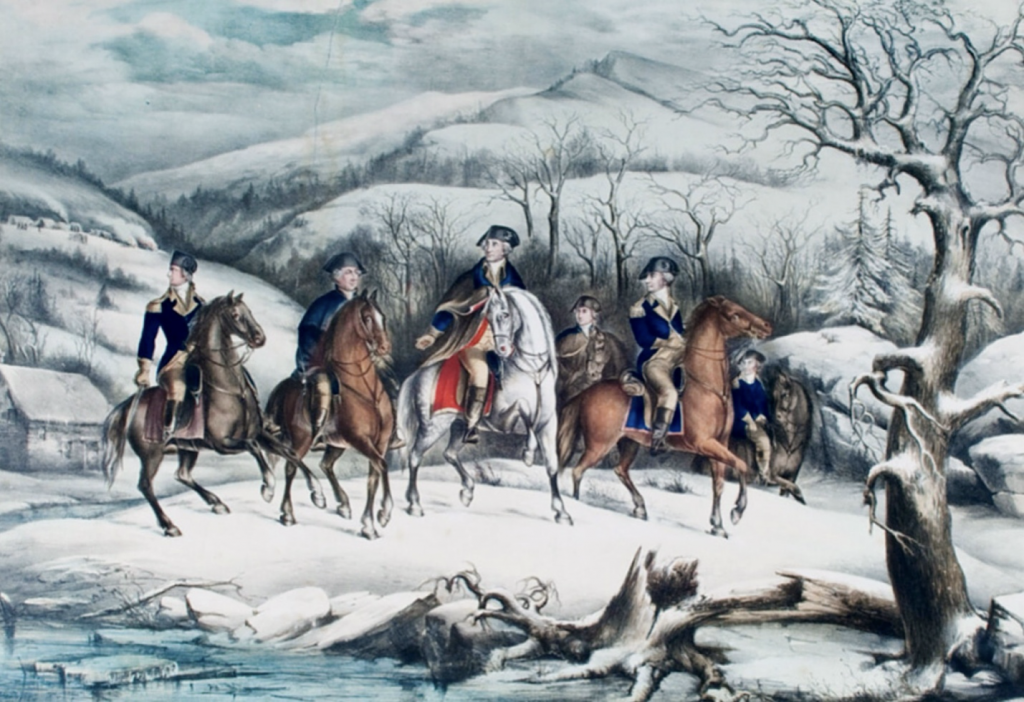
Edward Moran 1855
Pictured on horseback are Lafayette, Nathaniel Green, Washington, Anthony Wayne, and Henry Knox. John Brooks stands at Washington’s left.
Brooks returned to medical practice after the war, but civic and military services were also part of his sphere. He was a leading member of the Massachusetts Medical Society. He was an original founder and future president of the Order of The Cincinnati, the order of Revolutionary War officers whose mission was to promote knowledge and appreciation of those who fought for independence. He was a major in the Middlesex Division, which helped put down Shay’s rebellion in 1787. He was a member of the state convention, which ratified the Constitution. In 1787, during the Quasi-War with France in 1797, Washington offered Brooks the position of brigadier general, but he politely refused. He was involved in the Washington Monument memorial and the Bunker Hill Monument Association. He was joined by his good friend Lafayette in dedicating the site of the monument in 1824.
Politically, Brooks was one of the last pure Federalists. He served in the state legislature and was governor from 1816 to 1823. He was considered a moderate and was able to stave off conflict between the Federalists and the Democratic-Republicans. Therefore his administration was the personification of the “era of good feelings.”
Brook’s two sons followed him in military careers, however, with tragic results. Lieutenant John Jr., a marine, was killed during the Battle of Lake Erie while serving on Commodore Perry’s flagship USS Lawrence in 1813. Perry wrote to Brooks: “It is with heartfelt pain I am under the necessity of communication to you the irreparable loss which you and our country have sustained in the death of your gallant and worthy son. I sympathize with you most sincerely.” Army lieutenant colonel Alexander Brooks died in 1836 in a steamship explosion in Florida.
John Brooks died in 1825. He was reported to have said on his death bed: “I have received orders and am ready to march.”

